2022 Week 7: Neighborhood/Community Organizing
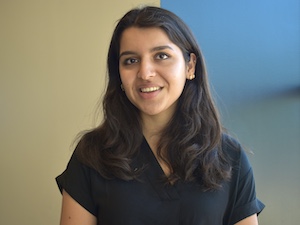 Aiman Altaf | 29th St Community Center
Aiman Altaf | 29th St Community Center
I see intersectionality at 29SCC through the activities I do with the kids and adults who come to the community center, and in the ways the center interacts with other local nonprofits.
One of the first times I noticed it was after a kindergarten health lesson, where all the kids were really excited to learn more about healthy eating and share their knowledge. I would eat lunch with the kids during the week, and noticed that one girl’s packed lunch every day was the same: mini donuts, a pack of Doritos, and a juicebox. She was one of the most engaged during my lessons, and on this day she was telling the kid across from her, who was eating the lunch provided by the center, that the cheese he was eating had dairy and the tuna had protein. She told him he was being really healthy, while side-glancing at me to show that she had been listening. As happy as I was that this girl actually cared and was engaged during the lesson, I was also frustrated that she couldn’t really eat healthier on her own. The kids just eat the food they receive from home, and not everyone is in a position to make that change, whether that be for financial reasons, time constraints, accessibility, or other problems. While researching for my wellness table, I had read statistics about the local community and learned that 60.6% of the land in the Waverlies is covered by food desert, compared to 12.5% in Baltimore City overall. The median household income in our community is also $10,000 lower than in Baltimore City and the percentage of children in single parent households is 63.3% compared to 25% nationally. There are so so many factors that affect the children who come to our summer camp, and eating healthier food might be the least of their families’ priorities or just plain impossible for them to achieve. To add to the intersectionality, a healthy lifestyle has such pervasive effects on all other parts of livelihood as you grow up, including your brain’s capacity to function, your longevity, your mobility, and more. This means that the disadvantage persists from childhood to adulthood. It’s why the community kitchen the 29SCC has received grants for and is now starting construction on is so important, because alongside the classes that will be held at the kitchen, this initiative will be so useful for overall family health.
Aside from my own contributions, I have also seen intersectionality in how 29SCC collaborates with so many nonprofits. For example, on Friday I visited the Neighborhood Design Center and the Central Baltimore Partnership, where the directors of each gave me and the other CIIP interns at these organizations a tour of Station North and talked a bit about how our organizations collaborate with each other. In my time here, I have also attended the events of the Summer Connect Series, which is a collaboration between seven different organizations, and I have attended so many meetings that involve people from these orgs. There’s so much collaboration rather than competition, which can be an issue for nonprofits competing for the same resources. However, these organizations have chosen to collaborate instead of compete, which has opened so many opportunities for helping the community.
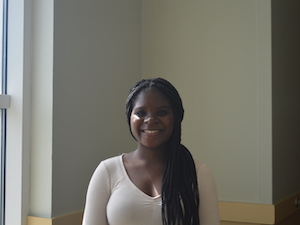 Mimi Avril | Central Baltimore Partnership
Mimi Avril | Central Baltimore Partnership
As CBP works in the midst of oppressive systems, I think intersectionality is at the root of our work. By considering how race and class intersect, CBP is able to create programs that benefit those who need them the most. Specifically within their public health initiatives, CBP is aware that one’s health is determined by a multitude of factors including race, class, gender, and age. Knowing this, CBP seeks to create outdoor programming, distribute healthy food, connect residents to resources, and build mobile health clinics. Beyond this, CBP considers how one’s quality of life is impacted by factors outside of health such as schooling, housing, and neighborhood connectedness. To improve these aspects for the neighborhoods they work in, CBP provides the Legacy Home Repair program that provides free home repair services to older residents that have lived in their homes for a while. CBP also works in local public schools to improve student safety and wellbeing by focusing on traffic combing and speed bumps in areas surrounding schools. Furthermore, in order to plan their next initiatives and programming, CBP hones on the lived experiences created by the intersection of their residents identifies in order to see what issues they might not be keen to.
As CBP is at the center of multiple quality of life improvements in Central Baltimore, they collaborate with many other placements. CBP works with the Neighborhood Design Center to create blueprints for projects and improvements in local public schools. They also work with the 29th Street Community Center to host free cooking classes and demonstrations. While CBP’s work is comprehensive and widespread, I see some potential for them to one day expand their mental health initiatives. While CBP is an indirect service provider, I see the potential to collaborate with more grass roots organizations such as the Baltimore Harm Reduction Coalition. Working with the Baltimore Harm Reduction Coalition, CBP might engage in direct services and gain knowledge of the mental health landscape and opioid crisis in Baltimore City.
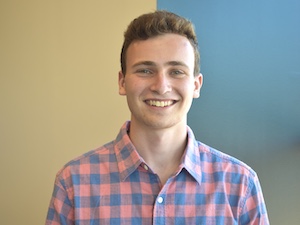 Will Polen | Neighborhood Design Center
Will Polen | Neighborhood Design Center
At points this summer I’ve felt like my CIIP experience isn’t experiential enough; while other interns spend each day with community members, creating interpersonal relationships and understanding where they fit in the city, I’ve spent most of my time engaging in less tangible work from the comforts of a laptop and an office. NDC plays a facilitator role — helping communities envision built environments that best reflect their wants and needs — and that lends itself to work ripe with concepts and planning. There’s community engagement, of course, but that’s only small part of each NDC project. Most people I’ve met have been co-workers, clients, partner agencies, and design specialists. I haven’t had the romanticized experience of helping someone directly.
That’s why I deeply cherished my experience this Friday — when Karla from NDC and Aaron from CBP hosted a ‘CIIP Interns Day’ with Mimi, Aiman, and me. This internship is only 8 weeks, of course, and each project I’ve worked on will take years before they blossom with real results. But both Karla and Aaron were phenomenal at putting our work into context (Central Baltimore Partnership is also a facilitator, and much of their work is also at an organizational instead of individual level). Through a tour of Station North which highlighted a few completed NDC projects, to discussion of the built environment’s direct impact of residents’ daily lives, I was reminded that the work I’ve helped do this summer will have great impact on many Baltimoreans.
Though I won’t be leaving my CIIP experience with a rolodex of summer campers or local families that I’ve helped, I recognize that my time with NDC has still been instrumental in my growth and perhaps just as impactful. My work with the Arch Social Club will eventually yield an area in Penn North for people to gather and celebrate, for example. By acting as design facilitators for local organizations and communities, we help them provide services for residents that otherwise wouldn’t have existed. So, sure, much of my impact was conceptual and intangible – for now. But (once these projects are finalized) that won’t always be the truth.
And, for what it’s worth, it’s great to tour around Baltimore and see projects that NDC had a hand in creating. I’m sure that’ll be a fun pastime for me in my next three years as a Hopkins student, and it’ll remind me of my great summer as a CIIP intern.
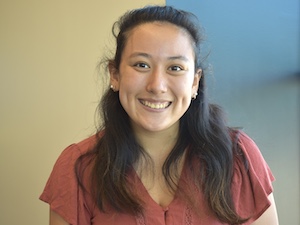 Cecilia Ramirez | Historic East Baltimore Community Action Coalition
Cecilia Ramirez | Historic East Baltimore Community Action Coalition
Week 7 and I don’t know where the time has gone.
The realization that I have one week left of my internship was a such a reality check, but has allowed me to reflect even more deeply about my experiences and the program as a whole. I think something that has really sunk in is how connected so many issues are and how related so many of the missions of the nonprofits are. From my experiences at my placement, many people in the city who are experiencing challenges, whether it be being unhoused or food insecurity or education barriers, they often don’t just face a single challenge. The lack of resources and safety nets once someone experiences a challenge is like a gateway to being vulnerable to other challenges. This connection also made me realize how important collaboration and communication between different nonprofits are. Getting to see how my placement works with other organizations and community members has been enlightening, but also hearing from my peers all the intersections of their work to different organizations and nonprofits really drives these points home. Coming into this summer, I felt like the world of nonprofits seemed scary and big, but having worked a short 8 weeks, it seems a little smaller and more welcoming.
My placement works mainly in education and employment resources, providing shelter to vulnerable populations, providing recovery and wellness resources, and improving the physical buildings and community spaces in the East Baltimore area. Though these are specific to each program or project, they affect so much. For example, many times providing services to unhoused youth also means educational and employment resources to transition to stable situations in their next steps. Health also is evident in everything that we do, someone of poor physical or mental health faces so many more barriers and once one aspect of health starts to falter, it can be like a domino effect. This is all to say that providing community resources, to improve communities as a whole, requires analysis of all aspects of life and conditions. It requires looking at root causes of the troubles and then tackling those. Community health is education, it is public health, it is financial health, it is every one of the CIIP placement categories.
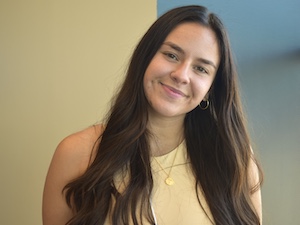 Laís Santoro | Pro Bono Resource Center
Laís Santoro | Pro Bono Resource Center
I had a busier in person week these past few days which was really fun and an enjoyable time! I love working in the PBRC office by the way, it is really peaceful because there isn’t really anyone there but you feel the work and everything that all the projects are working on heavily in there (even if it isn’t the same physical space). At MILAP court, I colored and made a new friend who was a little worried about his mom’s immigration case- nothing really new there, but the attorney that I ended up interpreting for later on was apparently quite famous? George Clooney played him in a movie about law and such, apparently, and he worked for a bunch of big law companies and is now retired. It was nice to learn about his career and also get some more practice with my legal interpreting.
One part of this week that did suck is I had a pretty bad cough for most of the time, especially at night that has been continued since last week. Went to JHU’s health and wellness center to find out that thankfully, it’s not COVID or bronchitis, but likely just a chest virus and my post-nasal fluid acting up in my lungs. I finally was prescribed some medication that helps me cough less and also a nasal spray that truly changed my life in the past week or so, but that did make me work from home on Wednesday because I was just so tired and would cause more of a ruckus at court than I would help.
One of the main projects that I have been working on this past summer was coordinating a Home Preservation Workshop with the Esperanza Center and Southeast Community Development Corporation. There were some changes with scheduling to deal with and I wanted to make sure the flyer was perfect. Something funny but not that funny was an error I made on the flyer. Initially, I wrote “prevención de ejecuciones” which I thought was foreclosure prevention. It is not and means “prevention of executions” – in theory, this is good and it’s definitely something that we should all promote and support but not the purpose of the workshop I was trying to coordinate. Not only that, once I made the edit that the folks at Southeast CDC shared with me, it was still wrong and then read “prevention of mortgage”. That would also be nice and a great solution to find affordable housing for folks but again, not the right message. I’m so grateful for them checking the flyer and catching that mistake and am always reminded to re-check and re-read my work.
I did attend my first ever estate planning clinic this week though!! It was all very exciting and I loved it. There were lawyers at each table and the clients would come and talk to them, obtain their documents, applications, whatever was necessary. I coordinated the resource table since a partner from Senior Legal Services was also there. Many clients needed the Homeowner’s Tax Credit Application or the Homestead one and didn’t even know what they were- super easy ways for them to save a few couple hundred or thousand, sometimes, dollars each year on their taxes. I appreciated feeling included in the journey of seeing all the clients come in and then go and participate in it as best as I could. We got a very cute team picture together with the Baltimore skyline in the background since it was at the rowing club. I definitely learned so much about day-of issues that may come up that we need to be prepared to deal with and also how that is really life when working in a non-profit: being able to handle flexibility and many tasks that come up, even if you are not the most qualified to handle an issue or concern.
The next day I also did something new: went to rent court! Apparently it was a slow day, but I just arrived after the docket already began and everyone was in the court room. The Courtroom Advocacy Project (CAP) is such a large team and has some great interns there. I met the attorneys and talked to the paralegals as well, about law school, working for one of the biggest and most corporate law firms in the US, switching jobs and making sure to be 100% about whether you want to do law. It is the profession with the highest suicide rates in it more than med school even, and as a paralegal I was spoking to said, often times doesn’t treat you with a lot of respect. Respect and being treated as a human and an asset often meant there was not as much money in the job, but it really depends on what would make you more fulfilled. For me, I cringed a lot at how the paralegal (her name was Tracy) said she felt when she worked for the larger firm- like a number, she didn’t know anything about her boss or his life outside of work, she had long hours, and it was just work, work, work. That was ultimately why she switched positions to something more non-profit style, a smaller workplace, where you can make friends and be treated like you matter. It got me thinking a lot over the weekend, too, and ruminating on what I had heard and what I want for myself in the future: something that is meaningful, where I truly help people, might not be the biggest moneymaker but is fulfilling in other ways, where I can make friendships with the people I work with outside of work, and being excited to go to work and do what you want and were trained to do. Hopefully I can find that!
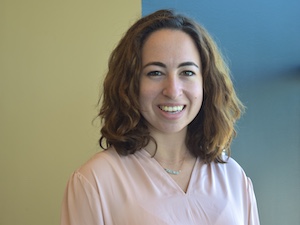 Lily Sheth | Neighborhood Housing Services of Baltimore
Lily Sheth | Neighborhood Housing Services of Baltimore
One of my biggest takeaways from this summer is that in contrast to the private sector, the nonprofit sector embraces resource sharing, collaboration, and communication. Organizations humbly accept that the social problems they are tackling were created by multiple public and private firms and agencies over decades. Therefore, they must solve them using a collaborative and open approach. Neighborhood Housing Services of Baltimore (NHS) has exemplified this theme in the nonprofit sector, and I am grateful to have participated in projects with other CIIP interns and organizations around the city.
One example of collaboration between my placement, other city nonprofits, and my peers’ placements is the Mobile Toolkit project. This community-driven project aims to create a van that stores lawn and home repair tools that can be lent out to the residents of the Greater Mondawmin and Rosemont neighborhoods for free. This resource helps residents to maintain their lawns, homes, and outdoor community spaces without having to pay for expensive equipment. NHS is taking on a leadership role with the implementation of the toolkit, but it will eventually be transitioned over to the Coppin Heights Community Development Corporation, which will house and maintain the van. Furthermore, all of my meetings for the toolkit have been with residents from various neighborhood associations within Greater Mondawmin, such as the Panway Neighborhood Association and the Greater Mondawmin Coordinating Council.
To better understand best practices for the policies and procedures of tool lending, I reached out to Ayla and Jessa at the Station North Tool Library to set up a meeting. They enthusiastically agreed to help us out and informed us about how their organization goes about acquiring, maintaining, and donating tools to their community. Jessa and Ayla brought up so many points that my supervisor and I hadn’t even thought of and helped us cement our policies and procedures for the toolkit. Furthermore, they offered to partner with us for our tool drive, and provided advice for which tools to ask which organizations for.
NHS was also looking for a place to store the tools that will eventually be in the van and asked if the SNTL could help us out. While they didn’t have the storage, they recommended we talk to Central Baltimore Partnership (CBP) since they had recently purchased the larger building SNTL is in. Luckily, CBP is another CIIP placement so I reached out to Mimi and her supervisor Aaron about this idea. They were really helpful in connecting us to potential storage options around the city and I am grateful for their support.
Finally, I was tasked with identifying a graphic designer for the exterior of the van. I reached out to Shantika at Jubilee Arts, as they have partnered with NHS before and do really great community arts development work in the city. Through her, I was able to meet with their director, Ms. Black, who is awesome, and excited at the prospect of working on the Mobile Toolkit. They are going to use the project as a learning experience for their cohort of students this upcoming academic year! The Mobile Toolkit is just one example of the intersectionality that occurs everyday in the nonprofit sector, and I am so happy that I got to work with my fellow interns to further a project that carries deep meaning to the residents of Greater Mondawmin and Rosemont and NHS.
